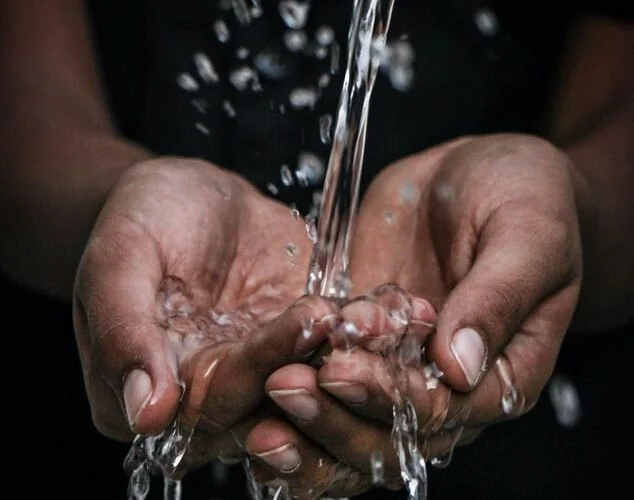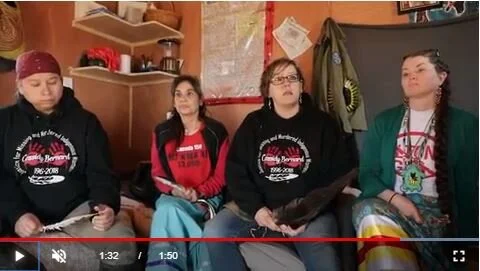Canada needs a new trans-disciplinary Institute on Environments, Health and Well-being to research links between environmental change, human behaviour, societal organization and health. The institute must engender innovative, evidence-informed actions that not only reduce harm, but improve the natural and built environment by addressing the drivers of environmental change.
W5 asbestos investigation triggers water testing in Alberta municipality
Medicine Hat, Alta. will begin testing for asbestos due to "community concerns" following a W5 investigation that showed the presence of fibres in the tap water of two Canadian cities. About 32 per cent of Medicine Hat’s watermain network — roughly 140 kilometres — is made up of asbestos cement pipe and is among the 85 communities W5 revealed to have those pipes still in use underground.
Health Canada releases assessment report on effects of climate change on health
The price of climate change is real. This crisis has already taken lives in extreme heat waves, and is increasing risks to Canadians from flooding, and from respiratory illnesses like asthma. Bold, urgent action is not only needed – the science is clear that it will make a real difference. Many of these health impacts can be prevented by scaling up efforts to adapt to climate change in an intersectional manner—both in Canadian society at large and in health systems. Strong adaptation measures can prevent potential health impacts and make health systems and facilities more resilient to climate change.
Iqaluit’s Water Crisis Demands Action Now
On October 12, the city of Iqaluit, Nunavut declared a state of emergency following the discovery of fuel contamination in their water supply. A full month later, the city remains in a water crisis, with little indication as to when the water supply will be back in service. The Canadian Armed Forces have been enlisted for an indeterminate period of time to provide potable water to residents. This indefinite military presence in the city is disturbing – the government is forcing citizens to depend on the armed forces for drinking water, a basic necessity. As a city with a large Inuit population, the crisis in Iqaluit highlights the federal government’s continued disregard of Indigenous peoples and their health. According to Lorraine Rousseau, Public Service Alliance of Canada North Regional Executive Vice President, this represents “decades of broken promises and ongoing inequalities that Inuit and Indigenous communities face.”
‘An ongoing symbol of colonization’: How bad water affects First Nations’ health
In Curve Lake First Nation, illnesses from what’s believed to be related to water quality have been so systemic that some people don’t believe reporting them would make a difference, according to the community’s chief. Emily Whetung, the chief of Curve Lake First Nation — just north of Peterborough, Ont., — said she and her family got sick from what’s believed to be related to bad water about seven or eight years ago.
Why is it important to drink lots of water in the summer?
We all know that water’s important for us. Up to 60 per cent of adult bodies are water, and we’re always told to drink lots of it to make sure we stay hydrated. But why is it extra important for us to drink more water in the summer, and how does drinking water help us in the hotter months? Water is always critical for our health, but here are 3 reasons you need more of it in the summer heat: Hot weather, extra physical activity, and spending more time outdoors.
Canada and Ontario mark 50th anniversary of Great Lakes Agreement by signing ninth agreement
The Great Lakes are a treasured resource that are integral to the health and well-being of millions of Canadians. Canada and Ontario are committed to strong, ongoing collaboration with their partners to protect and restore the Great Lakes. Today, the Governments of Canada and Ontario announced that they have signed the new Canada-Ontario Agreement on Great Lakes Water Quality and Ecosystem Health, which sets out specific actions each government will take to protect and restore the Great Lakes, such as preventing toxic and nuisance algae, improving wastewater and stormwater management, reducing plastic pollution and excess road salt, restoring native species and habitats, and increasing resilience to climate change.
How much water should runners drink?
Everyone has that one friend who never leaves home without their two-litre jug of water, and not surprisingly, this is usually the same friend who’s constantly looking for the nearest bathroom. But is this water-guzzling pal onto something? It’s no secret that drinking water is good (and necessary) for the health of runners and non-runners alike, but exactly how much water do we actually need? This answer will vary for everyone, but use these guidelines to determine if you’re staying hydrated.
Thirsting for Solutions
As of June 2012, there were 146 First Nations communities in Canada under a long-term Drinking Water Advisory. Drinking Water Advisories are created when the water in a community is deemed unacceptable based on the Canadian Drinking Water Guidelines which set basic parameters for clean, safe drinking water. A long-term drinking water advisory is one that has remained in place for at least one year. Some of these communities had been living under an advisory for over 20 years. First Nations communities are disproportionately affected by water quality problems as a result of longstanding water resource management issues and colonial practices of the province. The federal government has a goal to end all long-term drinking water advisories on public systems on reserves by March 2021. Since November 2015, 88 have been lifted, however 61 remain.
Bad water sickens First Nations, but government doesn’t track the toll
The true toll of the water crisis in First Nations communities across Canada can’t be known because the government has failed to track and study water-related illnesses. That stands in the way of tackling the problem, experts told the Institute for Investigative Journalism as part of “Clean Water, Broken Promises,” a year-long investigation conducted in collaboration with universities across the country and a consortium of media outlets including The Tyee. Some critics charge the “black hole” of information is intentional because it allows authorities to duck responsibility. A disproportionate number of illnesses that occur as a result of contaminated drinking water are in First Nations communities with substandard water systems, but the data needed to map the reality are missing.
Canada and New Brunswick invest in the expansion of the water system for residents of Memramcook
The water system expansion project will convert a test well into a production well in the new East Memramcook region. This will expand the capacity and the sustainability of the system and benefit the community by increasing access to potable water. The project will also provide water to residences that are currently not serviced. A booster station and a water storage tank will also be constructed in order to provide sufficient water pressure to residents. This expansion will also provide a secure water source for an additional 175 users.
A TALE OF THREE WATERSHEDS: WHAT WE KNOW — AND DON’T KNOW — ABOUT THE HEALTH OF CANADA’S FRESHWATER
Canada is famously home to 20 percent of the world’s freshwater — but how well are we stewarding this supply? WWF-Canada recently reassessed the health of our country’s 25 watersheds to better understand how they’re responding to threats from pollution, habitat loss and climate change. Our 2020 Watershed Reports found that 26 per cent of Canadas’s 167 sub-watersheds received a score of Good or Very Good, which is good or very good news! But what’s bad, or possibly very bad, is that nearly 60 per cent of these sub-watersheds received no score at all because they remain Data Deficient. In other words, we just don’t know. This lack of data is concerning as we need a complete picture to determine which areas need dedicated efforts to protect our freshwater ecosystems.
Canada and Newfoundland and Labrador invest in healthier communities with recreation and water infrastructure
ST GEORGE'S, NL, July 16, 2020 /CNW/ - The health and well-being of Canadians are the top priorities of the governments of Canada, and Newfoundland and Labrador. But the COVID-19 pandemic has affected more than our personal health. It is having a profound effect on the economy. That is why governments have been taking decisive action to support families, businesses and communities, and continue to look ahead to see what more can be done. Strategic investments in creating safe park spaces and a reliable water supply will play a key role in ensuring Newfoundland residents have modern facilities to support a healthy community.
Ellen Page Tackles Canada’s Environmental Racism In ‘There’s Something In The Water’ Documentary Trailer
In her new documentary “There’s Something in the Water”, co-directed by Ian Daniel, the actress and activist focuses on the effects of environmental racism on black and indigenous communities in Nova Scotia. “In Canada, your postal code determines your health,” sociologist Ingrid Waldron says in the trailer for the film. “So we know that where you live has bearing on your well-being. Indigenous and black communities are the ones that tend to be located near hazardous sites.”
Better drinking water and wastewater systems coming to multiple BC communities
WEST VANCOUVER, BC, Aug. 27, 2019 /CNW/ - The governments of Canadaand British Columbia are investing in modern reliable water services to build healthy sustainable communities where families can thrive today and for years to come. Today, Pamela Goldsmith-Jones, Parliamentary Secretary to the Minister of Foreign Affairs and Member of Parliament for West Vancouver–Sunshine Coast–Sea to Sky Country, on behalf of the Honourable François-Philippe Champagne, Minister of Infrastructure and Communities; and Sheila Malcolmson, Parliamentary Secretary for Environment and Member of the Legislative Assembly for Nanaimo, on behalf of the Honourable Selina Robinson, B.C. Minister of Municipal Affairs and Housing, announced funding for 15 projects to improve drinking water and wastewater services for residents across British Columbia.

















